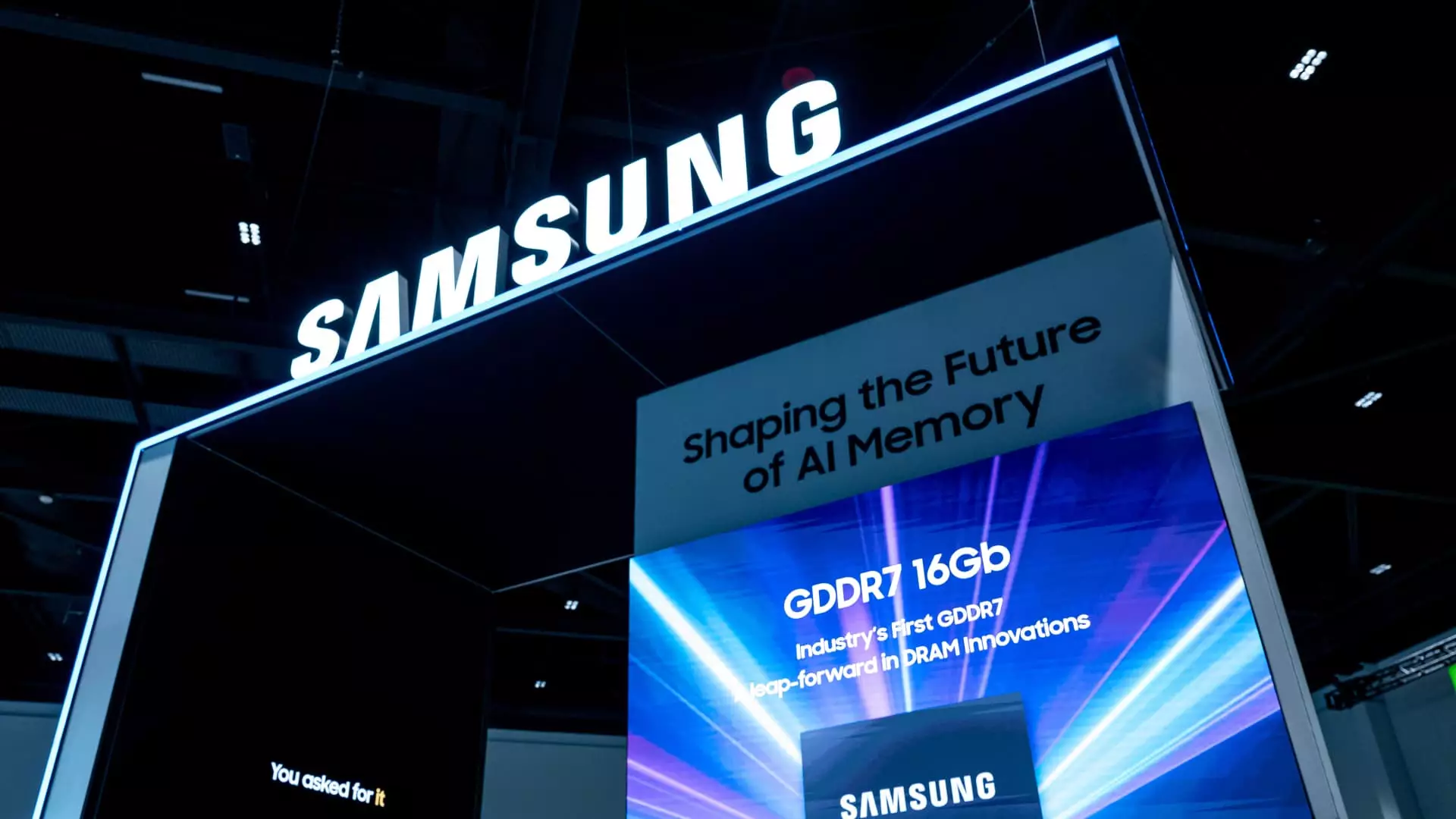Samsung Electronics, long regarded as a titan in the global technology arena, now finds itself grappling with the harsh realities of an evolving industry. Despite its historical dominance in memory chips and smartphones, recent forecasts reveal a disconcerting decline in profitability, casting doubt on its ability to adapt swiftly to the competitive pressures emerging from the artificial intelligence (AI) boom. The expected 56% plunge in operating profit, down to roughly 4.6 trillion won, signifies more than just a temporary dip—it highlights the company’s struggle to maintain its market edge amid relentless innovation from rivals such as Nvidia, SK Hynix, and Micron.
This forecast underscores a broader failure to anticipate and respond effectively to the rapid technological shifts driven by AI. Nvidia’s ascension as the leader in AI chips has reshaped demand dynamics, leaving traditional players like Samsung in a vulnerable position. While Samsung’s reputation as a major memory producer remains intact, its inability to swiftly secure or certify its high-bandwidth memory (HBM) products for Nvidia’s cutting-edge AI processors exposes its sluggish innovation cycle. In a fast-paced sector where technological supremacy can swiftly change hands, Samsung’s delay in product certification and deployment illustrates a missed opportunity to solidify leadership in this critical segment.
Strategic Missteps and Market Realities
Beyond innovation delays, Samsung appears to be navigating a minefield of strategic miscalculations. The company’s statement points to inventory value adjustments and U.S. restrictions on advanced AI chips for China as contributing factors for the profit decline. These external pressures reveal how geopolitical tensions and trade restrictions are complicating Samsung’s global supply chain management and market expansion strategies. While Samsung’s partner ecosystem and diversified product portfolio offer some resilience, they are insufficient to counteract the internal and external headwinds.
Moreover, Samsung’s foundry business faces underwhelming demand amidst fierce competition from Taiwan Semiconductor Manufacturing Company (TSMC). TSMC’s dominance in wafer fabrication and its strong relationships with key customers like Nvidia and AMD have allowed it to capitalize on the AI boom, whereas Samsung’s foundry division remains hampered by weaker order flow and internal inefficiencies. Internally, reports of staff cuts suggest that Samsung is in damage control mode, attempting to streamline operations in an industry where agility and cutting-edge capacity are crucial for survival. Such measures may be necessary but also risk undermining the company’s capacity to innovate and sustain long-term growth.
Chasing Shadows in the AI Chip Race
The core challenge lies in Samsung’s quest to regain footing in the high-value AI chip segment. Securing Nvidia certification for its latest HBM products represents a strategic milestone; however, delays mean lost market share and diminished credibility at a time when Nvidia controls roughly 70% of the global HBM demand. As one industry expert pointed out, Samsung’s failure to have its products qualified for Nvidia’s most advanced offerings significantly curtails its near-term potential in this lucrative sector.
Despite some hopeful signs—such as Samsung’s efforts to get supply agreements with AMD—it is unlikely these will impart immediate financial benefits. Production cycles in semiconductor manufacturing are inherently lengthy, and the current delays could stretch into the second half of the year, further widening the gap with competitors who are already capitalizing on the AI hardware surge. This lag in product readiness risks not only revenue shortfalls but also erodes Samsung’s perceived technological leadership, allowing rivals such as SK Hynix to strengthen their market positions.
Is Samsung’s Resilience Enough?
On the surface, Samsung’s stock performance—up more than 16% year-to-date—might suggest investor confidence. However, beneath these numbers lurks a fragile reality: a company contending with structural challenges in its core businesses while trying to pivot into high-growth AI markets that are currently dominated by competitors. The coming months will be telling. As Samsung prepares to unveil its third-quarter results, the underlying question is whether it can reverse its fortunes by accelerating innovation, strengthening strategic alliances, and navigating geopolitical hurdles with greater agility.
The larger narrative is clear: Samsung’s future survival depends on more than just maintaining its position as a top smartphone and memory chip maker. It must become a leader in AI-specific hardware—an arena where speed, innovation, and strategic foresight will separate industry leaders from laggards. Currently, the company’s delays and strategic missteps suggest it is playing catch-up in a game where milliseconds, certification approvals, and close customer relationships determine winners and losers. If Samsung is to remain relevant in this new era, it must fundamentally re-evaluate its innovation pipeline and agility in responding to rapid technological changes before it is overshadowed by nimbler competitors.


Leave a Reply